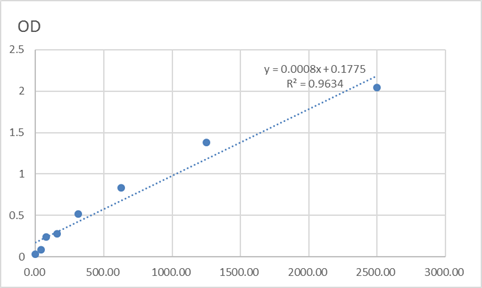Total Cytokeratin 10 Cell-Based Colorimetric ELISA Kit
- 货号:KA3310C
- 应用:ELISA
- 种属:Human;Mouse;Rat
- 基因名称:
- KRT10
- Human Gene Id:
- 3858
- Human Swiss Prot No:
- P13645
- Mouse Swiss Prot No:
- P02535
- Rat Swiss Prot No:
- Q6IFW6
- 储存:
- 2-8°C/6 months
- 其他名称:
- Keratin, type I cytoskeletal 10 (Cytokeratin-10) (CK-10) (Keratin-10) (K10)
- 检测方法:
- Colorimetric
- 背景:
- disease:Defects in KRT10 are a cause of bullous congenital ichthyosiform erythroderma (BCIE) [MIM:113800]; also known as epidermolytic hyperkeratosis (EHK) or bullous erythroderma ichthyosiformis congenita of Brocq. BCIE is an autosomal dominant skin disorder characterized by widespread blistering and an ichthyotic erythroderma at birth that persist into adulthood. Histologically there is a diffuse epidermolytic degeneration in the lower spinous layer of the epidermis. Within a few weeks from birth, erythroderma and blister formation diminish and hyperkeratoses develop.,disease:Defects in KRT10 are a cause of epidermal nevus epidermolytic hyperkeratotic type [MIM:600648]. Epidermal nevi affect about 1 in 1,000 people. They appear at or shortly after birth as localized lines of epidermal thickening. The extent of skin involvement varies widely.,disease:Defects in KRT10 are a cause of ichthyosis annular epidermolytic (AEI) [MIM:607602]; also known as cyclic ichthyosis with epidermolytic hyperkeratosis. AEI is a skin disorder resembling bullous congenital ichthyosiform erythroderma. Affected individuals present with bullous ichthyosis in early childhood and hyperkeratotic lichenified plaques in the flexural areas and extensor surfaces at later ages. The feature that distinguishes AEI from BCIE is dramatic episodes of flares of annular polycyclic plaques with scale, which coalesce to involve most of the body surface and can persist for several weeks or even months.,miscellaneous:There are two types of cytoskeletal and microfibrillar keratin: I (acidic; 40-55 kDa) and II (neutral to basic; 56-70 kDa).,online information:Keratin-10 entry,polymorphism:A number of alleles are known that mainly differ in the Gly-rich region (positions 490-560).,similarity:Belongs to the intermediate filament family.,subunit:Heterotetramer of two type I and two type II keratins. keratin-10 is generally associated with keratin-1.,tissue specificity:Seen in all suprabasal cell layers including stratum corneum.,
- 功能:
- ectoderm development, epidermis development,
- 细胞定位:
- Secreted, extracellular space . Cell surface . Localized on the surface of desquamated nasal epithelial cells (PubMed:12427098). Localized on the surface of lung cell lines (PubMed:19627498). .
- 组织表达:
- Seen in all suprabasal cell layers including stratum corneum. Expressed on the surface of lung cell lines (PubMed:19627498).
- June 19-2018
- WESTERN IMMUNOBLOTTING PROTOCOL
- June 19-2018
- IMMUNOHISTOCHEMISTRY-PARAFFIN PROTOCOL
- June 19-2018
- IMMUNOFLUORESCENCE PROTOCOL
- September 08-2020
- FLOW-CYTOMEYRT-PROTOCOL
- May 20-2022
- Cell-Based ELISA│解您多样本WB检测之困扰
- July 13-2018
- CELL-BASED-ELISA-PROTOCOL-FOR-ACETYL-PROTEIN
- July 13-2018
- CELL-BASED-ELISA-PROTOCOL-FOR-PHOSPHO-PROTEIN
- July 13-2018
- Antibody-FAQs



